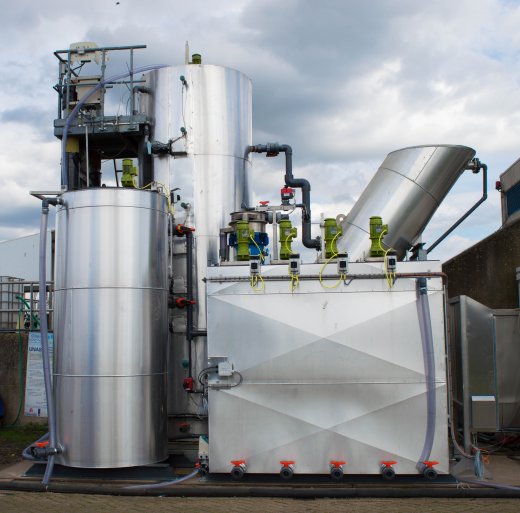STOWA publication on mainstream anammox research
Sewage contains more potential energy (as chemical oxygen demand, COD) than is needed to treat it with an activated sludge system. As a result, WWTPs could theoretically produce energy if that energy is efficiently harvested and used (Verstraete & Vlaeminck, 2011). For the transition to an energy-producing treatment, it is therefore important to maximize the capture of organic material (rich in COD) in the primary stage, and then valorize it into usable electricity and heat with anaerobic digestion. However, this COD is also needed to remove nitrogen via the conventional route (nitrification/denitrification, N/DN) and therefore the capture of organic matter is limited. As a result, with the current state of the art it is not yet possible to develop an “energy factory” or sludge-to-energy plant that does not use externally supplied sludge to reach energy positivity.
Alternatives to conventional nitrogen removal are the so-called shortcut nitrogen removal routes, nitritation/denitritation (Nit/DNit) and partial nitritation/anammox (PN/A), where the oxidation to nitrate is not needed and the N2 production takes place via nitrite.
The Mainstream Shortcut (MAS) project aimed to efficiently and robustly apply shortcut nitrogen removal via Nit/DNit and PN/A in the mainstream of a WWTP and thus remove nitrogen in a carbon and energy efficient way. In order to be generally applicable to a STP in the Netherlands, a nitrogen effluent quality of ≤10 mg N/L must be achieved with a relevant load ≥120 mg N/L/d.
The MAS technology was tested and optimized in a 13 m3 pilot reactor at STP Nieuwveer (Breda) and was operational for 1 year and 8 months at a temperature range of 12-24°C.
Despite the great efforts and related accomplishments in the research, the discharge requirement of 10 mg N/L has not yet been reached and the technology needs to be further optimized.
However, the potential of nitrogen removal with Mainstream Shortcut (MAS) has been clearly demonstrated!
More details about our research can be found in the STOWA report (2020-45) which was published on September 9, 2021 (in Dutch):
This research was co-financed by the Netherlands Enterprise Agency and the province of Zeeland.
the MAS pilot succeeded in removing nitrogen in a low-carbon manner, with a COD/N ratio that was almost three times lower than the conventional B-stage


Would you like to know more?
Ask
Boris
Boris Colsen, Managing Director